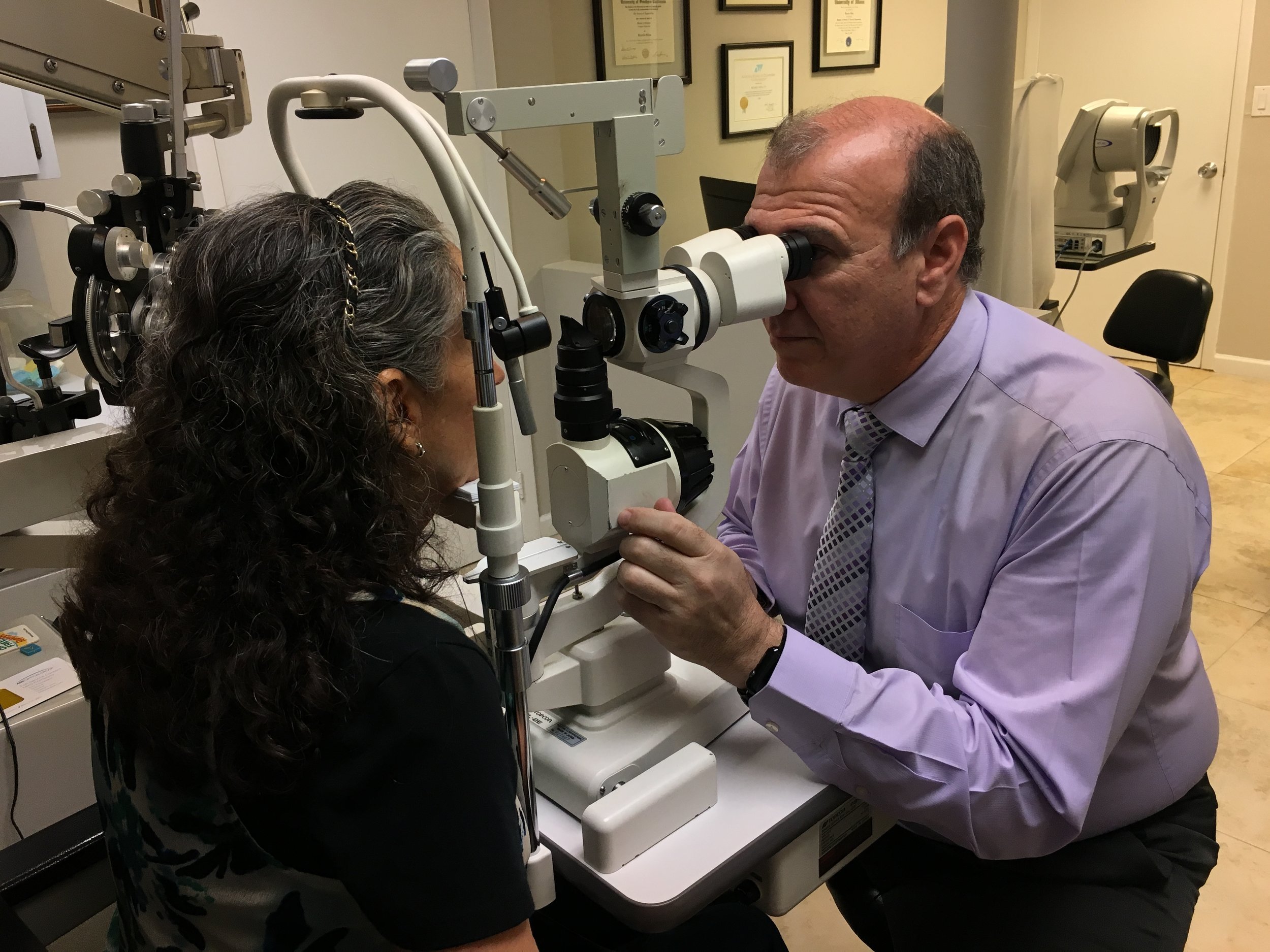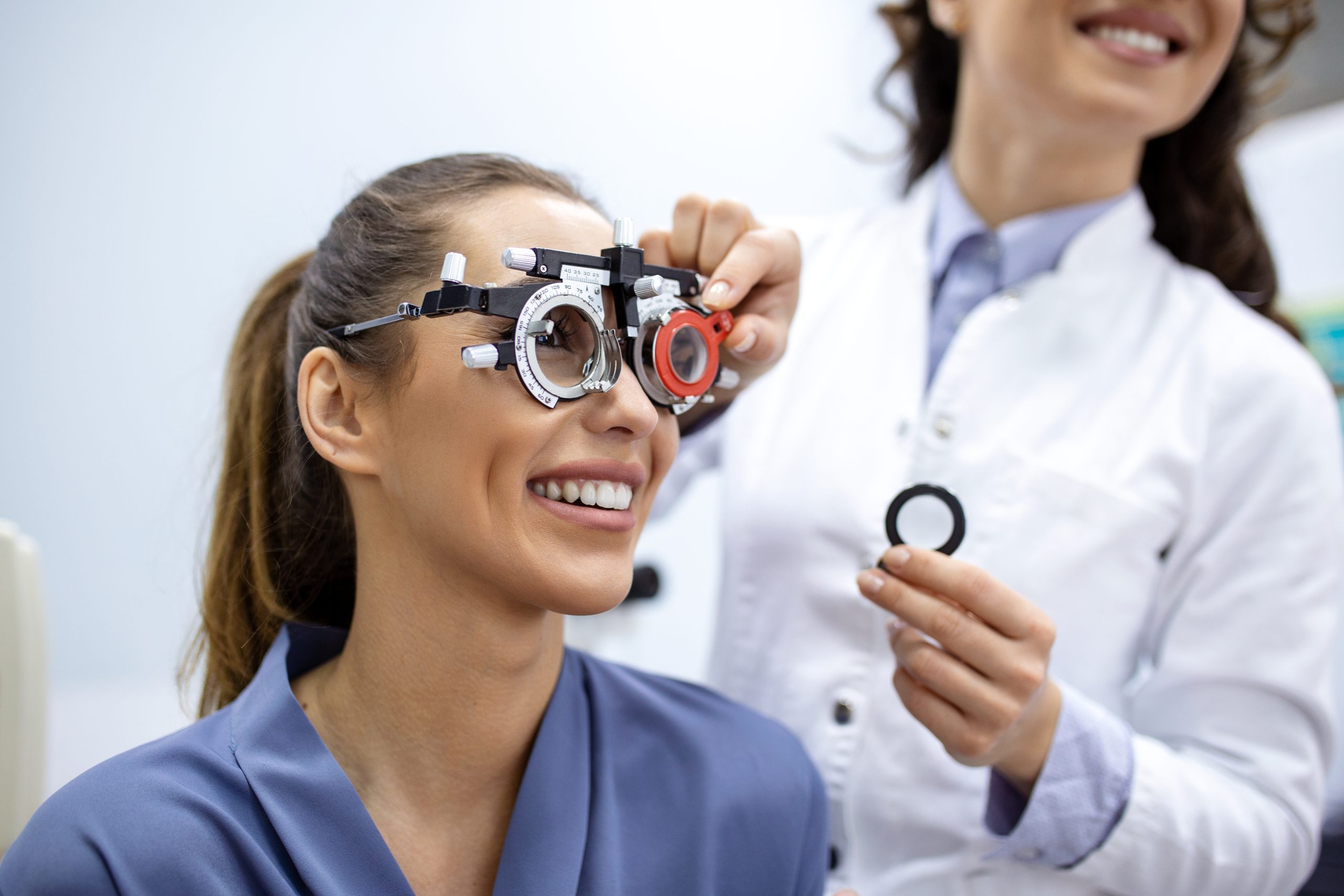How an Eye Doctor Can Change Your Vision Health in Chino
How an Eye Doctor Can Change Your Vision Health in Chino
Blog Article
Discovering the most up to date Technological Innovations in Optometry and What They Mean for Optometrists
In the ever-evolving field of optometry, current technical improvements are reshaping exactly how practitioners come close to eye care. From the precision of Optical Comprehensibility Tomography to the nuanced understandings offered by AI-driven diagnostic devices, these developments are establishing brand-new standards in individual evaluation and treatment. Teleoptometry is positioned to redefine ease of access, making certain that experience goes beyond geographical limitations. As these innovations penetrate the practice, eye doctors are confronted with the challenge of accepting these devices to improve patient outcomes. The concern stays: how will these technical shifts redefine the functions and responsibilities within the career?
Technologies in Diagnostic Devices
Progressing the field of optometry, technologies in analysis tools have changed the method eye care experts evaluate and identify ocular problems and visual disabilities. The previous decade has actually observed considerable technological developments, making it possible for more accurate and extensive assessments.
One more secret innovation is the introduction of innovative corneal topography systems, which map the surface area curvature of the cornea with precision. These tools are particularly useful for suitable get in touch with lenses and identifying corneal problems. Digital retinal imaging has actually transformed standard ophthalmoscopy, supplying detailed, panoramic views of the retina that promote comprehensive visual evaluations.
The advancement of wavefront aberrometry has likewise been important, allowing the analysis of refractive mistakes with unparalleled precision (Optometrist Chino). This innovation assists in personalizing restorative lenses and boosting medical results for refractive surgeries. Collectively, these diagnostic advancements equip eye doctors to provide remarkable client treatment, guaranteeing very early intervention and tailored treatment methods, eventually improving aesthetic health and wellness results
AI in Individual Administration
Building on the structure of advanced analysis tools, the consolidation of expert system (AI) in patient management represents a transformative jump for optometry. AI systems are significantly used to enhance effectiveness, precision, and personalization in patient treatment. By examining huge quantities of information, AI can determine patterns and anticipate prospective ocular conditions, allowing optometrists to tailor interventions better. This ability is vital in taking care of persistent eye diseases such as glaucoma and diabetic person retinopathy, where early discovery and continuous tracking are key.
Moreover, AI-driven systems facilitate structured person interactions and management procedures. Automated organizing, virtual appointments, and customized follow-up plans not only improve individual fulfillment however likewise maximize time management for experts. These systems can triage people based upon the urgency of their conditions, making certain that those in vital need receive timely attention.
In addition, AI enhances decision-making by offering optometrists with evidence-based recommendations and therapy paths. By incorporating information from digital health records, AI tools provide insights that educate medical decisions, lowering the danger of errors and improving person end results. As AI remains to evolve, its function in individual monitoring will likely broaden, reshaping the landscape of optometric treatment.
Developments in Retinal Imaging
In the world of optometry, retinal imaging has experienced amazing technical advancements that are enhancing diagnostic abilities and person care. Developments such as Optical Coherence Tomography (OCT) and fundus digital photography have transformed just how eye doctors envision and analyze the retina. OCT, specifically, supplies high-resolution, cross-sectional photos of the retina, enabling the comprehensive assessment of its layers. This capacity is very useful for early detection and monitoring of problems like glaucoma, diabetic retinopathy, and age-related macular deterioration.
Improved imaging modalities like OCT angiography are more refining analysis accuracy. This non-invasive strategy maps blood flow in the retina, offering essential insights right into vascular health and wellness without the need for color shots. Furthermore, adaptive optics innovation is being integrated right into retinal imaging systems to fix eye aberrations, providing unmatched image clearness. Such developments facilitate the recognition of minute retinal adjustments that might symbolize illness progression.
In addition, innovations in fabricated intelligence are boosting retinal imaging by enabling automated analysis of large datasets. These systems aid optometrists in determining patterns a measure of pathology, therefore improving diagnostic accuracy and effectiveness. Jointly, these developments are changing retinal imaging right into a cornerstone of modern-day eye treatment, boosting results and broadening healing opportunities.
Teleoptometry's Growing Role
Teleoptometry is progressively ending up being a vital element of eye care, driven by advancements in electronic interaction and analysis devices. This is especially advantageous in underserved and rural locations where access to specialized eye care is commonly minimal.
The assimilation of man-made intelligence (AI) further enhances teleoptometry, making it possible for the evaluation of visual information and assisting in the discovery of ocular problems such as glaucoma and diabetic retinopathy. AI-powered algorithms can swiftly translate complex imaging information, supplying optometrists with valuable understandings that bolster medical decision-making.
Moreover, teleoptometry sustains continuity of care via seamless assimilation with digital health documents (EHRs), enabling eye doctors to preserve detailed patient backgrounds. When consulting with various practitioners., this makes certain that individuals get personalized anchor and consistent treatment also.
In spite of read this article these benefits, difficulties stay, consisting of ensuring data protection and handling person expectations. Nonetheless, teleoptometry represents a significant stride in the direction of even more obtainable, reliable, and patient-centered eye treatment. As technology develops, its function is positioned to expand additionally.

Future Patterns in Eye Care
A myriad of innovative fads is readied to improve the future of eye treatment, driven by technological improvements and the developing requirements of individuals. One considerable fad is the integration of expert system (AI) in diagnostics, which promises to improve the accuracy and efficiency of eye evaluations. AI algorithms can evaluate substantial quantities of data from retinal images, potentially finding problems like diabetic retinopathy and glaucoma earlier than traditional approaches.
Furthermore, individualized medicine is gaining grip in optometry, with genetic testing notifying tailored therapy strategies. This method aims to optimize person end results by tailoring treatments to individual hereditary profiles. Wearable innovation, such as smart call lenses, is likewise on the perspective, supplying real-time tracking of intraocular pressure or sugar levels, thus giving constant understandings into systemic and eye health and wellness.
The adoption of enhanced fact (AR) and virtual fact (VR) in training and individual education and learning is one more emerging pattern. These technologies use immersive experiences that can improve understanding and abilities both for individuals and eye doctors. As these fads develop, eye doctors need to remain abreast of technological advancements to supply innovative treatment, making sure better client outcomes and satisfaction in the vibrant landscape of eye treatment.
Conclusion

Collectively, these diagnostic improvements encourage optometrists to deliver exceptional patient care, guaranteeing early intervention and tailored treatment approaches, inevitably enhancing aesthetic health results.

As these modern technologies proceed to develop, eye doctors need to adapt and incorporate them into technique, inevitably optimizing workflow effectiveness and boosting the standard of eye care delivered to individuals.
Report this page